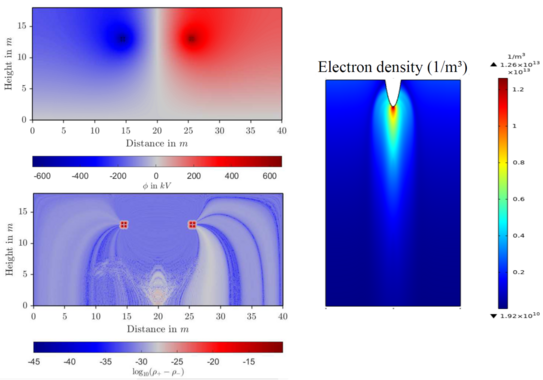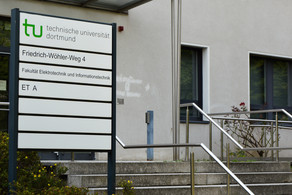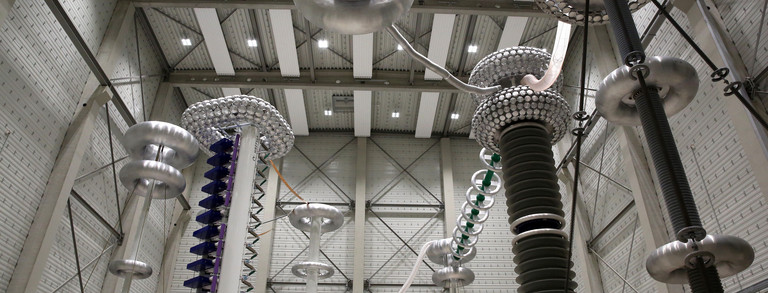Physical modelling and numerical simulation of gas discharge phenomena of high voltage engineering
In order to model and characterize insulation media in high voltage engineering, various measurement methods and laboratories are available at our chair. For example, high-voltage systems in our HVDC test center can be stressed with a mixed load (voltage pulse + DC voltage). The measurements used in this way can be used for experimental modeling.
However, fast estimations of insulating media and designs of high-voltage systems with experimental methods are often very time-consuming. Physical modelling is the remedy. Physical relationships are used to describe the physical properties of insulation systems mathematically. Gaseous insulating media lose their insulating properties under high voltages, whereby electrical discharges in the form of corona discharges and streamer discharges can occur. These electrical discharges can typically be described with so-called fluid models, which can be derived from the Boltzmann equation. Analytical solutions for the resulting nonlinear partial differential equation system are only available for very simple geometries. If the complexity of the geometries increases, numerical methods have to be used for the solution. At our chair we therefore have a high-performance computing server (2x Intel Xeon Gold 6244, 1TB Ram, NVIDIA Quadro RTX 5000) for the numerical simulation of physical systems. In addition to the hardware, the software also plays an important role. FEM software packages such as COMSOL or ANSYS can be used here. The COMOSL plasma module is particularly suitable for the description of electrical discharges in gases. In addition to the use of FEM software, frameworks in Python are used and finally numerical algorithms for the solution of the partial differential equations are implemented in Python itself.



